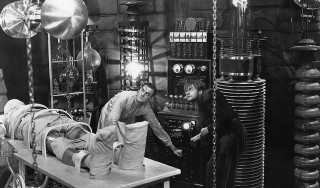 he past three weeks I've been working 7 days a week, 10 hours a day trying to get
my latest grant submitted by the deadline. It's a roller coaster of stress,
because if you forget to say something obvious, like the fact that you'll do
controls, the reviewers will nail you for it. If you say you'll run controls,
they'll nail you for that: it's boring and therefore not innovative. But the
hardest part is trying to guess what will be exciting. If your grant isn't
exciting to reviewers, you might as well not write it.
he past three weeks I've been working 7 days a week, 10 hours a day trying to get
my latest grant submitted by the deadline. It's a roller coaster of stress,
because if you forget to say something obvious, like the fact that you'll do
controls, the reviewers will nail you for it. If you say you'll run controls,
they'll nail you for that: it's boring and therefore not innovative. But the
hardest part is trying to guess what will be exciting. If your grant isn't
exciting to reviewers, you might as well not write it.
It's stressful, and it's murder on your sense of humor. I'm starting to understand why academics are so dull. Don't expect too many jokes—or evidence of proofreading—in this article.
A valuable resource is Project Reporter, which tells you what projects are interesting to the NIH. Since I returned to academia I noticed a distinct trend away from basic research and toward clinical and translational research. It seems that there's so much competition for grants only the most exciting grants ever get funded. And for reviewers, only the idea of funding a cure is exciting.
Universities have noticed this as well, and they're starting to close down basic research in favor of human trials. It doesn't seem to matter that many of human trials they're doing are stupid; all that's important to modern universities is whether they bring in money.

Early applied human performance research
I've even noticed it in my own research. The goal has always been to discover something that can be useful in curing diseases. The problem is that without understanding the cause of the disease, resources are wasted on what are little more than wild guesses. This may be one reason why, out of 400 Phase III drug trials of 240 drugs in Alzheimer's disease, not a single one has ever worked and only one drug has ever been approved.
This is bad news. Very few junior researchers have the resources to do clinical research, nor do they have access to patients. Their research may be brilliant, but they can't compete with established investigators whose projects have progressed all the way to clinical trials.
Last month a junior colleague of mine got a mediocre score on a grant that I thought was terrific. He did some brilliant work that uncovered how an important molecule called BDNF was processed in neurons. The reviewers praised the work but trashed the grant, saying it was done entirely in cell culture and therefore no good.
Clinical research and medical device testing are things that industry, not academia, ought to be doing. Unfortunately, now that the government has virtually killed off basic research in the biomed industry, they're going after clinical research as well. This will drive innovative, research-intensive companies out of business, and we'll end up with companies like Turing, whose former CEO Martin Shkreli's picture always comes up when you search for “most hated man in America” and Mylan, which makes nothing but generics. These may or may not be good businesses, but they're essentially parasitical.
I've been putting animal experiments in my proposals, and pitching them by making them sound preclinical. But in my field, Alzheimer's disease, animals don't tell us as much as we think, because quite frankly all the animal models suck.
Mice and rats simply don't get Alzheimer's. There are occasional reports of dogs or monkeys or even rabbits getting dementia that resembles it in some ways, but they've never held up. Some of these claims, like the claim that rabbits get Alzheimer's if you feed them cholesterol, were what we scientists call spit-take material. I was just fortunate I wasn't drinking milk when I first heard about them. The finding was impossible, because it's been known for decades that dietary cholesterol doesn't get into the brain. But the NIH funded the damn thing.
It turned out to be completely wrong, of course. You can make any animal sick by putting huge amounts of things in them that don't belong there. What you'll end up with is Frankenstein-like creations like the 5XFAD mouse.
The technical name for this one is B6SJL-Tg(APPSwFlLon,PSEN1*M146L*L286V)6799Vas. These mice have human APP (amyloid precursor protein) with four different mutations known by where they were identified: Swedish (K670N, M671L), Florida (I716V), and London (V717I), plus human presenilin 1 with two mutations (M146L and L286V). The only thing these mice are good for is showing what happens to a mouse when you put massive amounts of beta-amyloid in their brain. And they still don't get Alzheimer's.
It's a bit like those cancer studies where they fed a rat ten pounds of saccharin and claimed that, indeed, eating saccharin makes you sick.
Experiments on genetic mice were a sure way to get grants back in the day, and we still have to use them to get funded. Now it seems the fad is passing, and you have to do stuff to humans. If I were you I'd stay away from medical research labs for a while. And watch out for guys named Igor.
may 25 2018, 6:08 am; edited jun 02, 2018, 5:02 am

